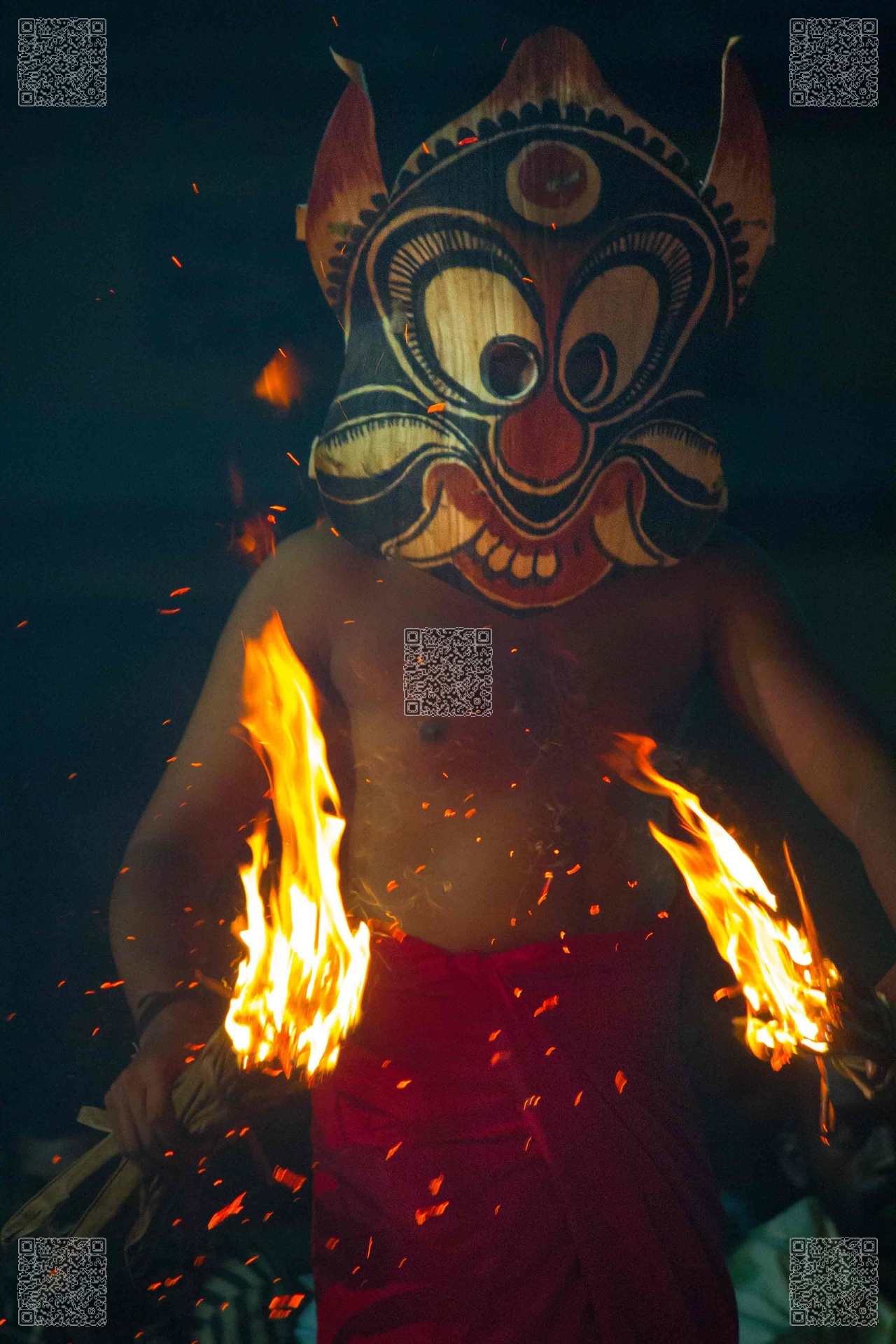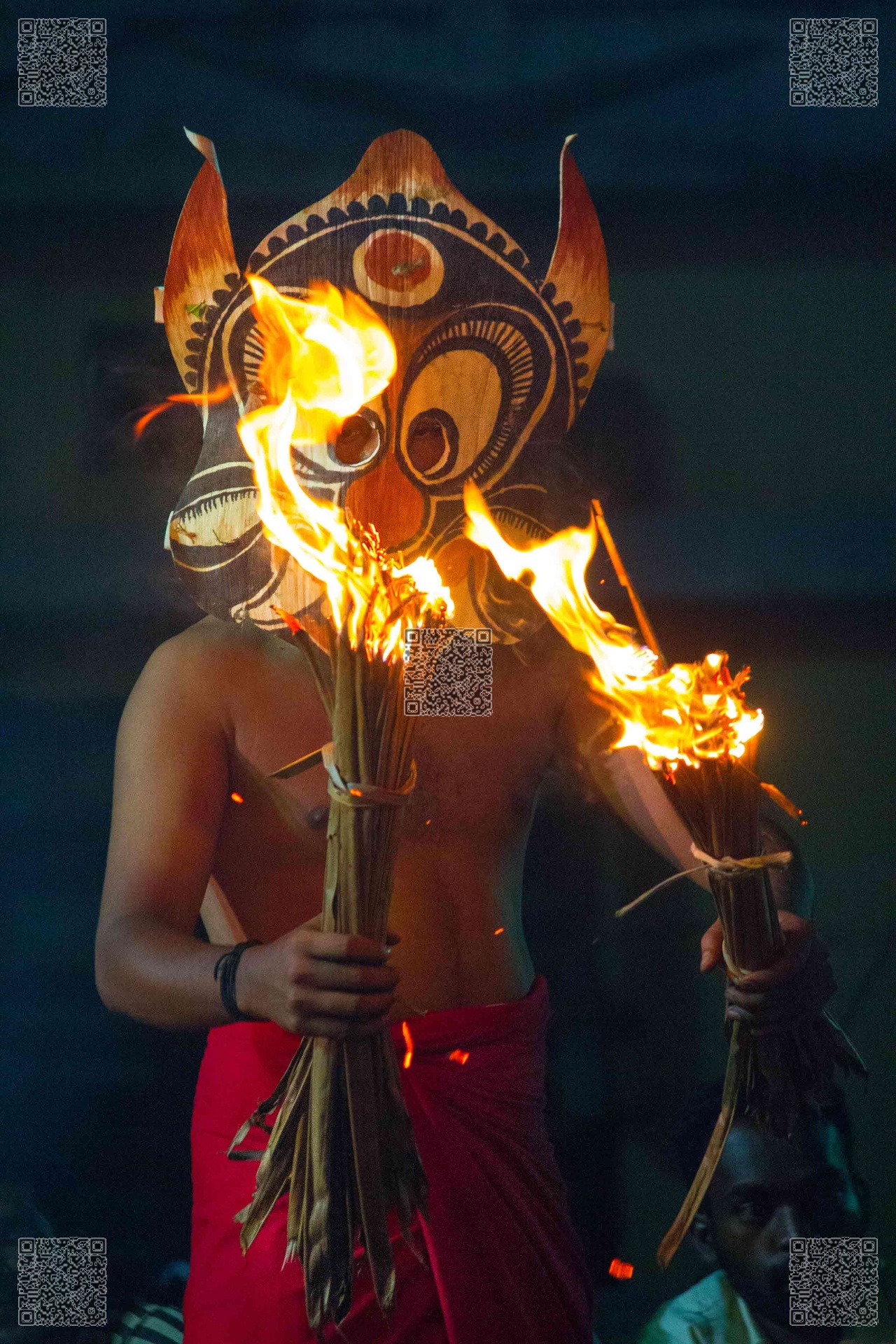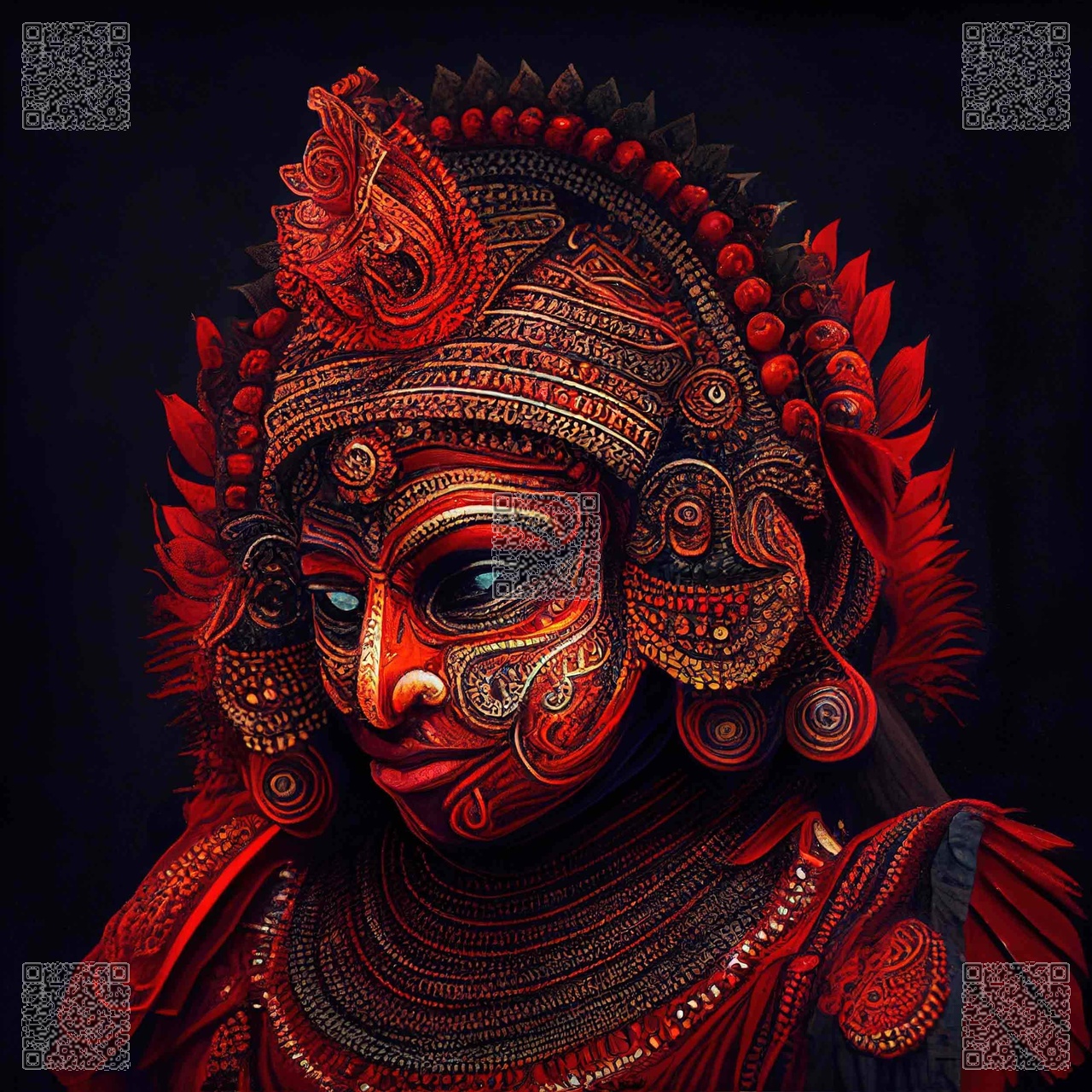Kochu Kunju Channar was an art lover. He architected the Alummoottil® Meda which is a 7000 square feet mansion. It was constructed in 1906. He was a connoisseur of art forms specifically Kolam Thullal.

Kolam thullal (literal meaning is Image Dancing) is mostly a warfare art form - it is either meant to inspire preparations for war, or it celebrates famous battles and their heroes. Alummoottil® family’s Kolam Thullal was mostly a follow-up to meetings with trained soldiers from the nearby Kalaris (martial artsschools), and a common forum to discuss unarmed hand to hand combat and armed close quarter combat.

Padayani (a famous form of Kolam Thullal) was associated with the Alummoottil® Kalaris, and its exact translation from Malayalam is “readying for battle”. Some historians refer to Padayani as a ritual, vital to the frontline of battle formations - not just inspiring infantrymen to hold the line, but also instilling in them the courage and the rhythm of the battle, and even imparting skills to ensure that the adversary does not breach the frontline. The elaborate headgear most prominently features intimidating Asuras (demons) and Rakshasas (monsters).

Alummoottil® Kalari’s (martial art dojos) frequently had performances of Kolam Thullal before Yudham (battle), Kalaripayattu Angams (duals, like until-death fights of the gladiators) and Kazhcha Payattu (martial art demonstrations, particularly for the purpose of recruiting soldiers). Although the Channars were predominantly Shaivites, there were occasionally Kolam Thullal performances for the nearby Bhagawathy (goddess) temples.

Performances were in the courtyard adjoining the Meda and Naalukettu, and members of the public were allowed to observe these rituals. One representatives from each of the 64 Alummoottil® Kalaris would compulsorily attend these periodic ceremonies. Most of the times, the Kalari guru himself would be present along with his / her deputies and senior disciples.

Kolam Thullal has distant similarities to the art form of Theyyam, practiced in North Kerala - the rhythm, percussion and actions bear resemblances that most likely are not coincidental. It is to be inferred that both art forms evolved as tribal customs and were adopted by the later civilizations for both ceremonial and religious purposes.



